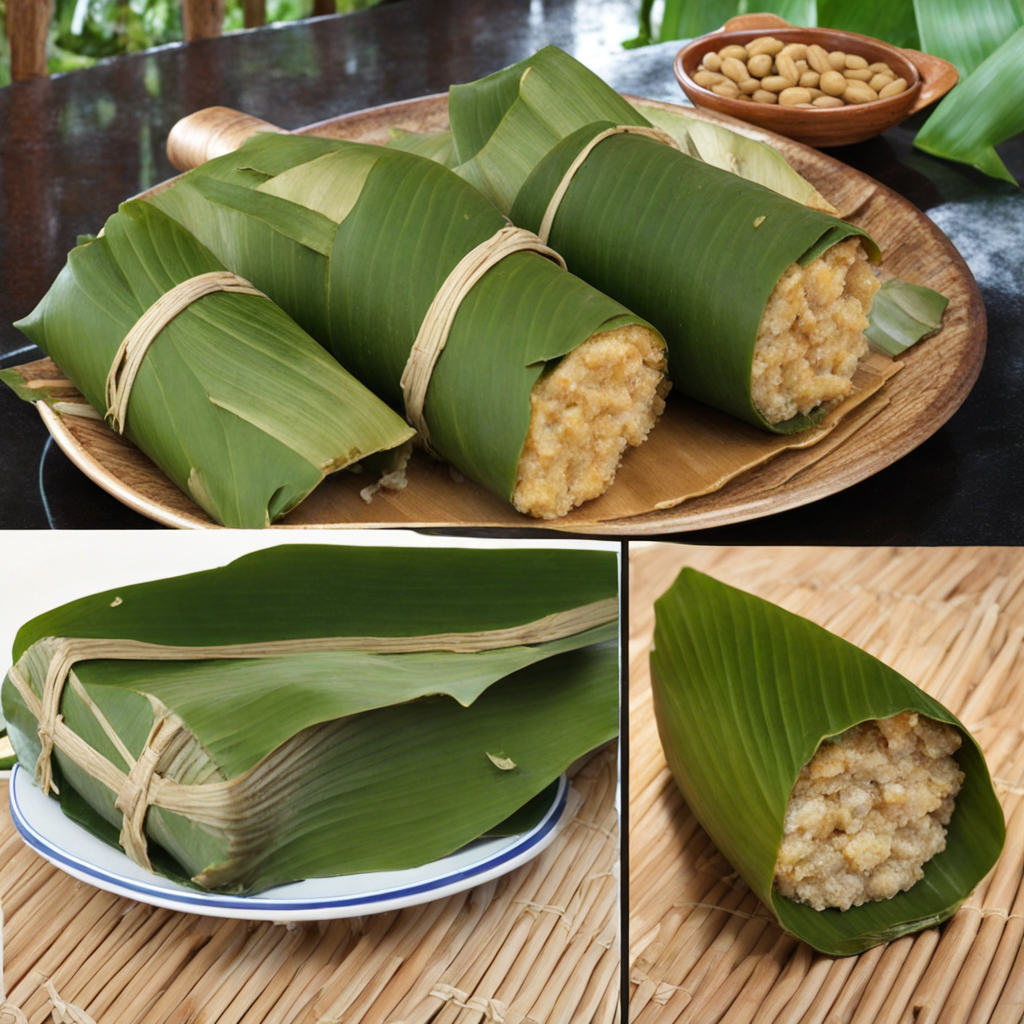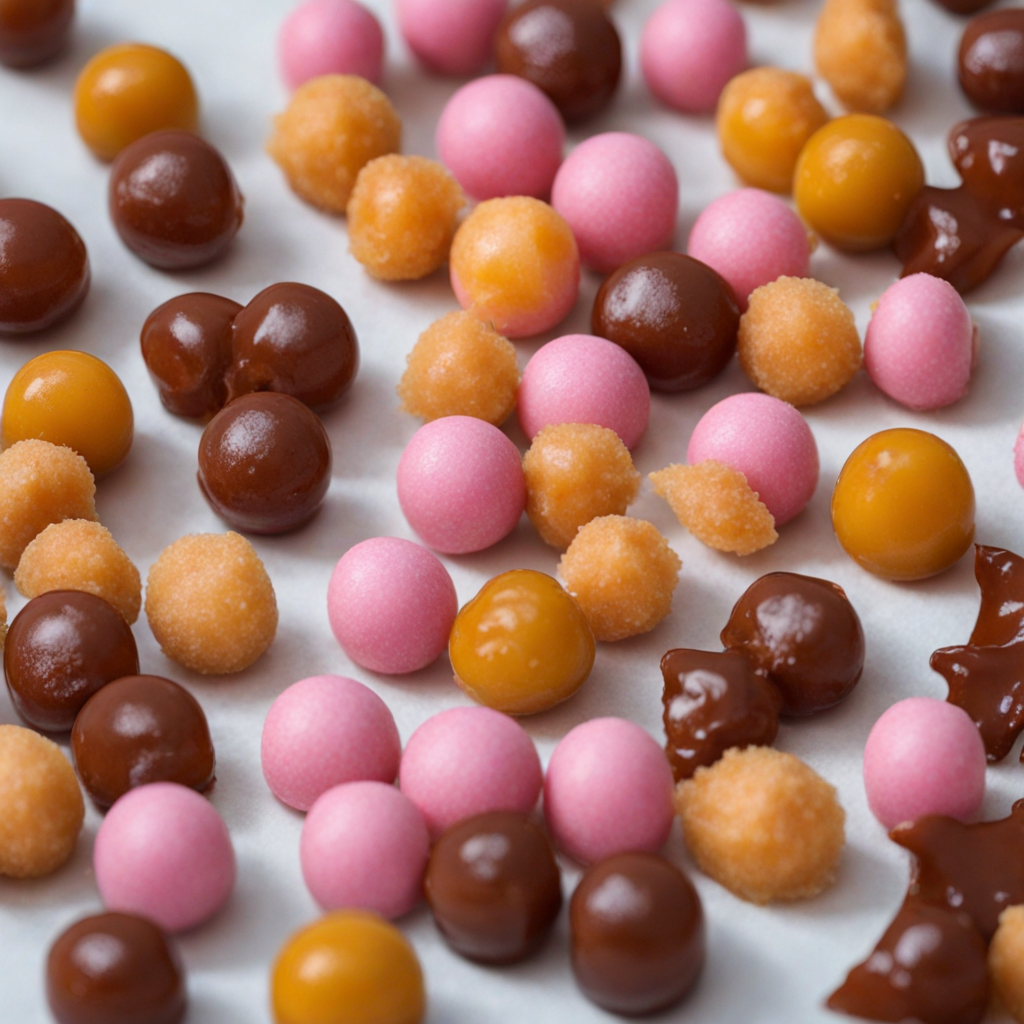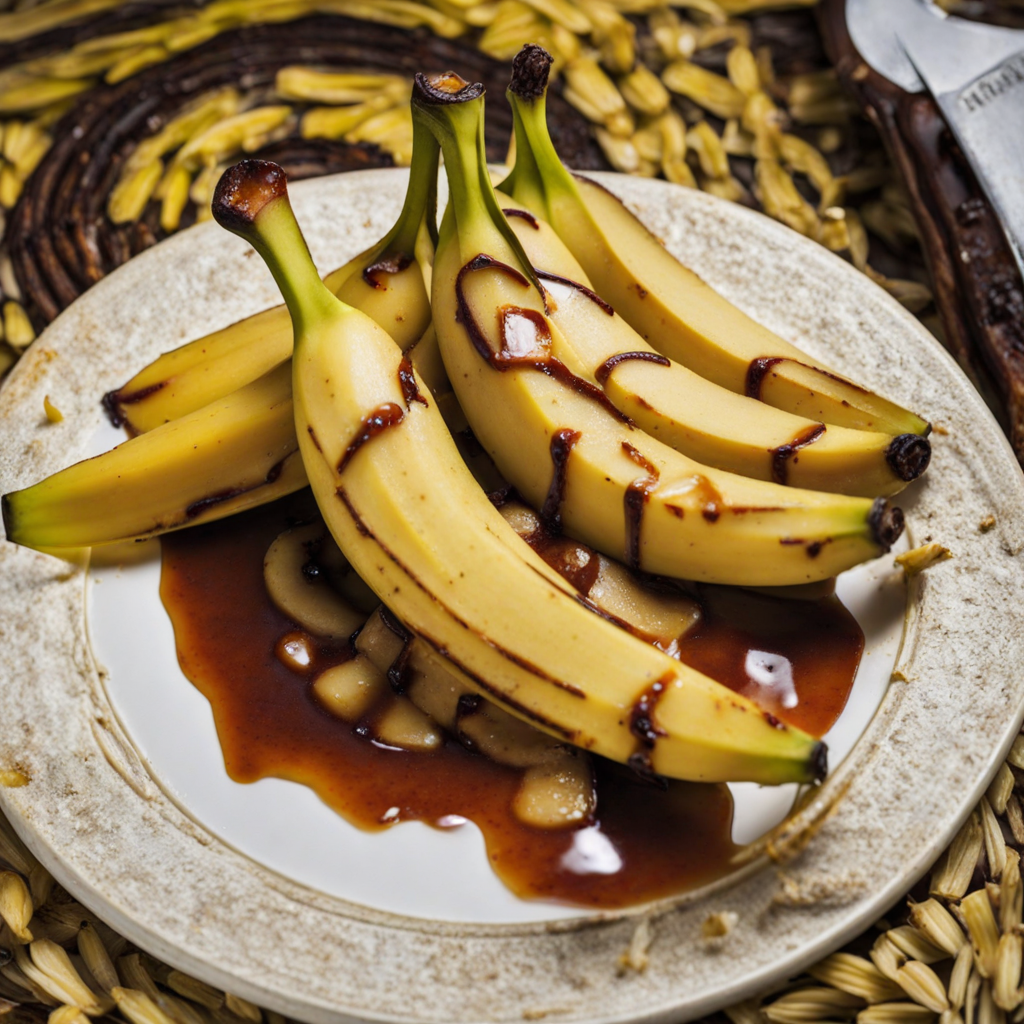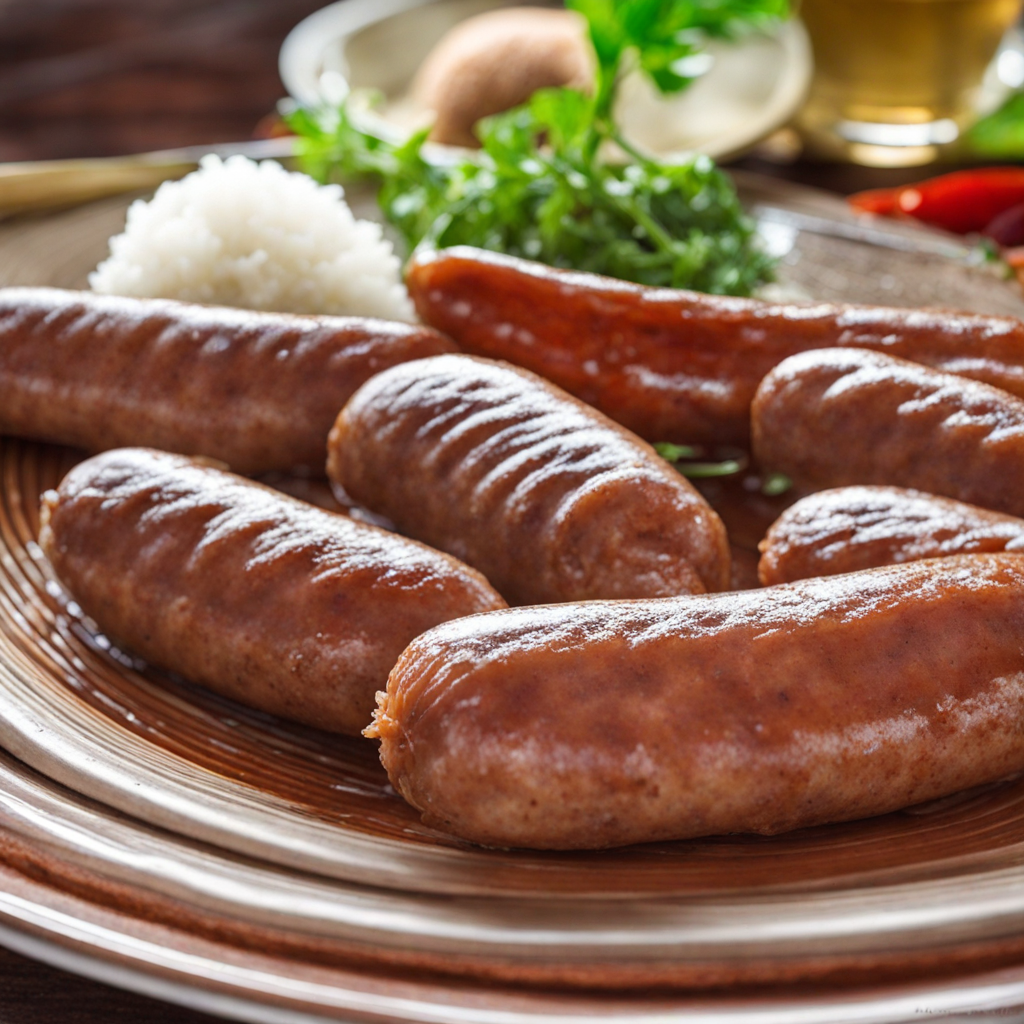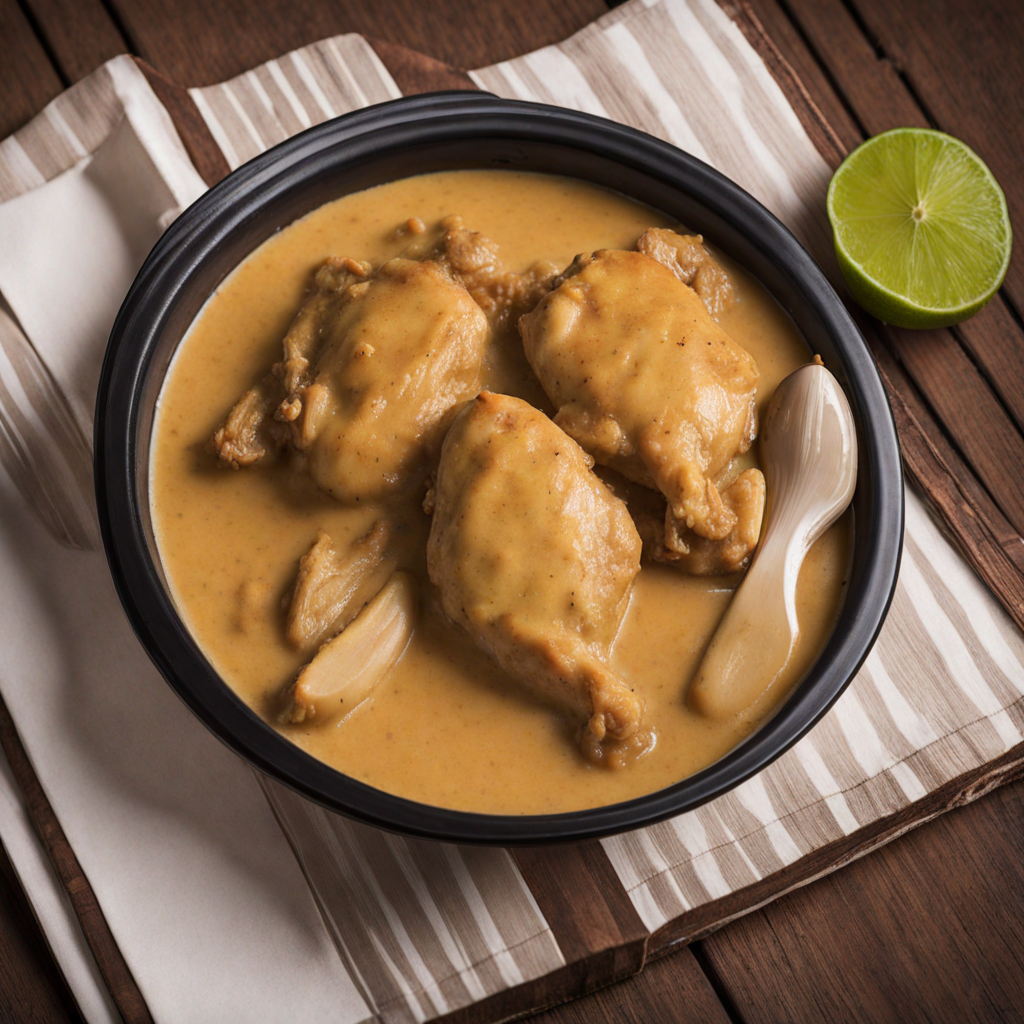Koba
Koba is a traditional Malagasy dish that offers a unique blend of flavors and textures, making it a delightful discovery for food enthusiasts. This delicacy is primarily made from ground peanuts, rice flour, and brown sugar, which are combined to create a rich, sweet batter. The mixture is then wrapped in banana leaves and steamed, allowing the flavors to meld beautifully while imparting a subtle fragrance from the leaves. The result is a moist, dense treat that is both hearty and satisfying, perfect for a snack or dessert any time of the day. The flavor profile of Koba is distinctively nutty, with the roasted peanuts lending a creamy richness that harmonizes with the sweetness of the brown sugar. The rice flour contributes a slight graininess, enhancing the overall mouthfeel and providing a wholesome base. When you take a bite, the initial sweetness is complemented by the earthy tones of the peanuts, while the banana leaf wrapping adds an aromatic touch that elevates the dish's sensory experience. Often enjoyed during special occasions and celebrations, Koba is more than just a treat; it is a cultural emblem of Madagascar’s culinary heritage. Each region may have its own variation, incorporating local ingredients or flavors, but the essence of Koba remains the same. This dish is not only a testament to the island’s agricultural bounty but also a delicious way to experience the warmth and hospitality of Malagasy culture. For those seeking an adventurous palate, Koba is an enticing introduction to the rich tapestry of Madagascar’s gastronomy.
How It Became This Dish
Koba: The Heart of Madagascar’s Culinary Heritage Koba, a traditional dish from Madagascar, is a fascinating embodiment of the island’s rich cultural history and culinary diversity. This delicacy, often enjoyed as a snack or dessert, is made from a mixture of ground peanuts, rice flour, and sugar, all wrapped in banana leaves and steamed. The preparation and consumption of Koba reflect the merging of various cultural influences that have shaped Madagascar over centuries, making it not just food but a symbol of community and identity. #### Origins of Koba The origins of Koba can be traced back to the Merina people, one of Madagascar’s largest ethnic groups, who inhabit the central highlands. The name "Koba" is believed to derive from the Merina language, where it signifies the ingredients and the method of preparation. The dish’s roots are intertwined with the agricultural practices of the Merina, who cultivated rice and peanuts extensively. Historically, Madagascar has been a melting pot of influences, with traders and settlers from Africa, the Middle East, India, and Europe contributing to its unique cultural tapestry. The introduction of rice and peanuts, two staple ingredients in Koba, can be linked to these early interactions. Rice was brought to the island by Austronesian settlers, while peanuts were likely introduced by Portuguese or Arab traders. This blend of ingredients reflects the island’s ability to adapt and innovate, showcasing the resilience of its people through food. #### Cultural Significance Koba holds a special place in the hearts of the Malagasy people, transcending mere sustenance. Traditionally, it is associated with celebrations and important life events, such as weddings, funerals, and festivals. Koba is often prepared during the famadihana, or turning of the bones, a significant ritual that honors ancestors. During this event, families gather to celebrate their lineage, and Koba is served as a symbol of unity and connection to the past. The dish also embodies the spirit of sharing and hospitality, which is central to Malagasy culture. When Koba is prepared, it is often made in large quantities, allowing for communal sharing. Its presence at gatherings fosters a sense of togetherness, reinforcing social bonds among family and friends. This ritualistic aspect of Koba highlights the importance of food as a vehicle for cultural expression and community cohesion. #### Development Over Time As Madagascar has evolved, so too has the preparation and significance of Koba. In recent decades, the dish has gained popularity beyond its traditional roots, attracting the interest of tourists and food enthusiasts. This shift has led to variations in the recipe, with modern interpretations incorporating additional flavors and ingredients, such as chocolate, vanilla, or even fruit. These adaptations showcase the versatility of Koba while maintaining its essential characteristics. The commercialization of Koba has also emerged, with small businesses and street vendors offering the dish in urban areas. This evolution reflects broader societal changes, as younger generations seek to balance traditional practices with contemporary lifestyles. However, despite these changes, the core values associated with Koba—community, heritage, and hospitality—remain intact. #### The Preparation of Koba The process of making Koba is a labor of love, requiring skill and patience. Traditionally, the dish begins with the preparation of the ingredients. Peanuts are roasted and ground into a fine paste, while rice is milled into flour. The two are combined with sugar to create a rich, sweet mixture. This blend is then wrapped in banana leaves, which not only impart a unique flavor but also provide a natural, eco-friendly cooking method. Once wrapped, the Koba parcels are steamed, allowing the flavors to meld and the texture to become delightfully soft yet firm. The steaming process is crucial, as it ensures that the Koba retains moisture and develops its characteristic taste. After cooking, Koba can be enjoyed warm or allowed to cool and set, creating a delightful treat that is both chewy and nutty. #### Koba in Contemporary Madagascar Today, Koba is more than just a traditional dish; it is a symbol of Malagasy identity. As the country grapples with globalization and the influences of modern cuisine, Koba serves as a reminder of the importance of preserving culinary heritage. Many Malagasy people take pride in their ability to make Koba, often learning the recipe from their parents or grandparents. This transmission of knowledge is vital, as it fosters a sense of continuity and belonging within communities. Moreover, Koba has found its way onto international menus, showcasing Madagascar’s unique flavors to the world. Chefs and food enthusiasts are increasingly drawn to the dish, recognizing its potential to tell stories about a culture rich in history. By introducing Koba to a broader audience, there is hope that the appreciation for Malagasy culinary traditions will flourish, paving the way for a renaissance of interest in the island’s diverse gastronomic landscape. #### Conclusion Koba is much more than a simple dish; it is a vibrant expression of Madagascar’s history, culture, and community. From its origins among the Merina people to its contemporary adaptations, Koba embodies the spirit of resilience and innovation that characterizes the Malagasy people. As a beloved culinary treasure, it serves as a bridge between generations, connecting the past with the present and ensuring that the flavors of Madagascar endure for future generations. As the world continues to evolve, Koba stands as a testament to the power of food in fostering cultural identity and community. Its preparation and enjoyment weave a narrative that transcends time and place, inviting all who partake in its flavors to celebrate the rich heritage of Madagascar. Through Koba, we not only taste the past but also savor the shared experiences that unite us all.
You may like
Discover local flavors from Madagascar


